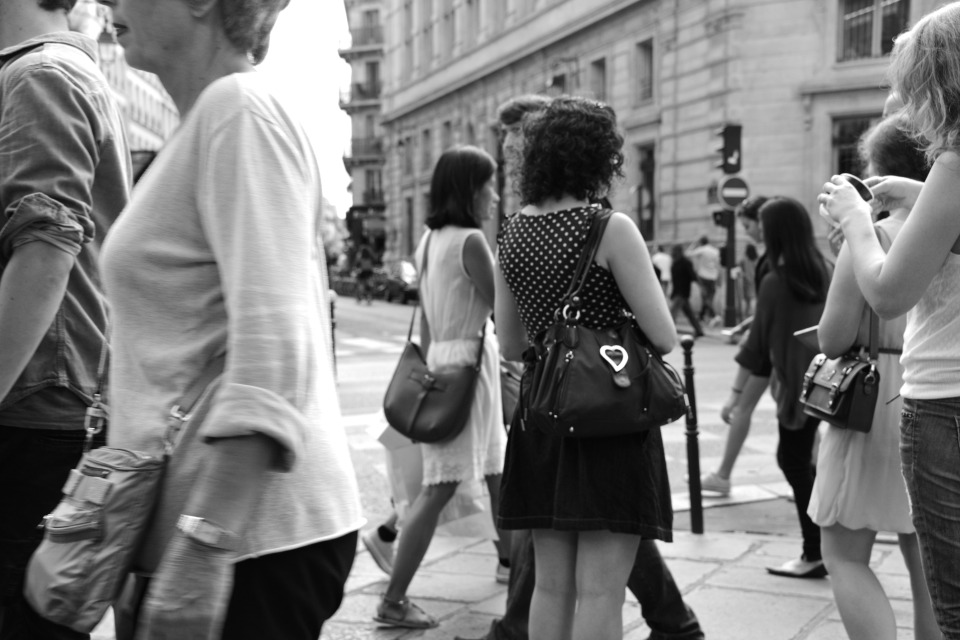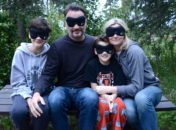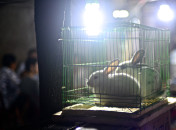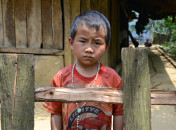It’s only two hours and 16 minutes on the high-speed Eurostar train from London’s St. Pancras International to Paris’ Gare du Nord. Although both cities are among the top travel destinations in the world, in Paris we intended to settle into a routine – home-cooked meals, home-schooling and hands-on cultural and historical field trips. But Paris is a city with alluring swagger, a place that thrums to draw even the most committed homebodies into its vibrant streets. We discovered many things about Paris, but routine wasn’t one of them.
HOME AWAY FROM HOME
We’d rented an apartment in the 4th arrondissement of Paris known as Le Marais (which is also partly in the 3rd arr.). It is an area that Angela and I spent time in nearly fifteen years ago and liked for its eclectic mix of cuisines, boutiques and melting pot of ethnicities and cultures. The apartment provided us a little slice of home, too – a kitchen to make meals, a washer/dryer, a dining room table; and it was close to the Metro, Starbucks and Marche Franprix. Although the building was right in the middle of this noisy part of town, our apartment was set back and very quiet. The boys loved it because they had their own room and the kitchen meant we could make homemade pasta and grilled cheese sandwiches.
THE FIRST RESTAURANT IS LIKE THE FIRST PANCAKE … IT’S HARD TO GET RIGHT
Finding good food can be complicated when walking around an unfamiliar neighborhood. We represent four degrees of openness to food types and four degrees of hunger at any given time, ranging from not-at-all to super-starving. Yet here we were in Paris, walking around the Marais, all of us were equally “starving” for much-missed American standards – burgers, fries, chicken strips, salads or something close. Unfortunately it was a long shot to find those in Paris (where we also frequently enjoy French food, just not then) and at the worst time to be eating – 4:00p. In Paris, 4:00p is the proper time for coffee or beer or kir royale, for sitting at a café watching everyone walk by and for smoking a cigarette while staring into the distance. It’s not the right time for dinner. Dinner doesn’t start until 8:00p at the earliest.
We wandered about and eventually landed at a place called Jacassess, French for magpies (not jackasses). It was completely empty and clad in hipness. The black walls and ceiling, hip graffiti-like menu boards and red-leather Parson chairs conveyed one story, while KISS blasting from the speakers told another. The waiter/cook/bartender/hipster greeted us warmly and was considerate enough to turn the volume down to ten (from eleven). He spoke virtually no English so we pointed and gestured our way to an order. The fries were over-salty, the burger couldn’t have been more rare (essentially lightly browned steak tartare) and the caprese salad could have fed a party of eight. But it took care of the hunger and got us into the rhythm of dining in the Marais.
STROLLING & EXPLORING
“The figure of the flâneur – the stroller, the passionate wanderer emblematic of nineteenth-century French literary culture – has always been essentially timeless; he removes himself from the world while he stands astride its heart.” – “In Praise of the Flâneur,” The Paris Review, Stephen Bijan.
Paris is a city for exploration on foot. We’d call it strolling, but somehow the French word for it – flânerie –seems a better fit. It means loafing, dawdling or loitering, and that’s exactly what we did several times on hot days and in the rain, during rush hour and on quiet afternoons.
We walked through the beautiful Jardin des Tuileries, past fountains and under the cooling branches of the sycamores and chestnut trees. We lingered to watch couples kiss and hold hands or old men stare into the distance or argue over dominos. We spent hours sauntering through the Marais, the Left Bank, Saint-Germain-des-Prés, Montmartre, the Bastille and along the Seine, past Notre Dame and everything in between in search of nothing in particular. Ronan wasn’t a big fan of the flânerie given that it was unseasonably warm in Paris – most days were in the mid- to upper-eighties. Asher was fine with the heat mostly, but was constantly distracted by the boulangeries and patisseries and their windows filled with chocolate infused, cream-coated, butter-baked, fruit-topped and be-icing’d treats all freshly made and displayed for passersby. “Dad? I’m hungry,” he would say as we strolled through neighborhoods, trying his best to give our pointless walk a specific goal.
When we weren’t strolling, we used the underground Metro to move across the city. In addition to being extensive and easy to navigate, it was dry and relatively cool compared to the heat and humidity above ground.
A highlight was the final evening we spent in Paris, walking and playing in the Jardin du Luxembourg. It is one of the best parks we’ve ever visited. Located in the 6th arr., it is a vast space teeming with visitors, photographers and mostly locals young and old. Like Tuileries, we loved strolling beneath trees starting to turn and drop their leaves. Chestnuts littered the pathways. We eventually found chairs and watched people go about their daily routine – hustling off to grab the Metro or stopping for a quick bite before going back to work. We passed sculptures (the boys never tire of making jokes about nudes with broken off/missing parts) and perfectly manicured flowerbeds, and past bocce courts filled with serious old men in hats. And on the southwestern corner of the park, we found a playground for the boys to burn off their remaining energy while Angela and I talked and watched.
One of my favorite strolls was with an old friend, Rich. He and his family live just outside Paris, so we met for a lunch over in the 8th arrondissement. After lunch we took laps through Parc Monceau and talked about business, the small and big cultural differences between the U.S. and France, start-ups, marketing, and mostly about our families.
MUSÉES & SPECTACLES
The Eiffel Tower would not have made the list (for Angela and me) of must-see places. Despite all its positives – steampunk architecture, elegant shape and wonderful views, it was with mixed feelings that we decided to suffer the grift and grime among the circus sideshow at its base because the boys really wanted to go. The queue for direct-to-the-top elevator tickets was long, so our best option was to climb up the stairs two levels to the secondary elevator bank. This essentially thins crowd traffic too, as the climb to the second level is exactly 669 steps, or around 375 feet. We climbed them at a modest pace with plenty of breaks, and saw several other visitors doing the same. It was hot and humid so we spent about thirty minutes on the first and second levels to cool off and enjoy the views. An elevator (the only option) took us the final 600+ feet to the top of the tower. It was intensely crowded and several announcements regarding the presence of pickpockets made it less enjoyable, as I was on patrol the entire time watching over the boys and Angela. The top of the tower also is so high that you lose the most beautiful silhouettes of Sacre Coeur, Notre Dame and the Arc de Triomphe, but we still enjoyed the overall experience and walking down was certainly easier than going up.
It was mid-afternoon and we were hot from walking through the Tuileries Garden when we visited the Musée de l’Orangerie – famous for its incredible presentation of eight murals of Claude Monet’s Water Lilies (Les Nymphéas). They are spread across two enormous ovoid rooms under diffused natural sunlight so that the paintings envelope visitors with an abstract, penetrating connection to the natural world as Monet saw it at his gardens in Giverny. The downstairs of the museum consisted of the Walter-Guillaume Collection, an amazingly rich and diverse assemblage of art from the first decades of the 20th century, including works by Picasso, Soutine, Derain, Sisley, Toulouse-Lautrec and Laurencin. We wrapped up our tour of the museum with a new show that opened that morning exhibiting the works and influences (and collection) of Émile Bernard. The quality and curation of the exhibit was remarkable, and Angela and I were slow in moving through.
One evening after a day filled with schoolwork we headed to Montmartre to visit Sacré-Cœur, a late 19th century Roman Catholic church. If you’ve been to Paris, you’ve seen it at the summit of Montmartre, where its travertine exterior is a brilliant ivory seemingly illuminated against any sky. Up close, it’s so imposing that it appears asymmetrical, looking almost like an elegant Byzantine village in miniature, or an elaborate wedding cake. We navigated through the sea of tourists and hustlers all milling about on the hot cobblestone streets either drinking beers and water or selling beers and water. After walking through the nave and around the ambulatory, we quietly passed through a large congregation of worshippers in mass. Back outside, we found a wonderful pizzeria called Babalou that rested in the shadow of the cathedral. We lingered over dinner, wine and an espresso before heading down the funicular and on the Metro back to our home.
Following a walk along the Seine and past the gothic masterpiece of Notre Dame, we headed to the Centre Georges Pompidou, home of the Musée National d’Art Moderne. Architecturally, the Center is one of those buildings people might like or more often hate – I don’t think I’ve ever met someone who loves the building. It is an iconoclast that literally turns large-scale building inside out – the functional elements such as plumbing, heating, cooling, electrical and safety are all color-coded and built external to the central structure of the building. Although the art isn’t as time-tested as at d’Orsay or l’Orangerie, we loved it for its oddity and challenge. The boys were bored by it all and hung out on benches reading their books while we toured the place.
OSSUARY
It was hot outside and the boys were a bit museum’d out – tired of looking at paintings and drawings of nudes and fruit. So, the coolest place we could find was nearly 100 feet beneath the Place Denfert-Rochereau, at the Catacombs of Paris where more than six million human skeletons are stacked and displayed. It was a photogenic location and plenty creepy and solemn, but after walking through several interesting rooms it did become a bit repetitious. Despite attempts at hearts and crosses, there are only so many ways to artfully place skulls and femurs.
BON ANNIVERSAIRE
On Angela’s birthday, we let her sleep a bit late as is our usual family tradition. Instead of making breakfast, we took her to a joint in the Marais called “Breakfast in America,” hoping for a savory meal. The food was mediocre and the waiter overly talkative. Half our meal was spent listening to his stories about being a part-time nanny in the evenings to a French family. We learned about his Brazilian girlfriend and that he’s happy to no longer be in Germany, but that he’s not learning French as fast as he’d hoped. His manager rolled her eyes every time she walked past him talking to us. He seemed like a nice enough guy, but we’d later cross paths with him again in a different setting under very different conditions.
We jumped on the Metro and headed over to the Musée d’Orsay, one of Angela’s favorite museums. We’d gone there a couple days before for a snack in the café and to scope things out for the return visit. This time we were efficient – we purchased our audio tours, gave the boys a scavenger hunt list to keep them entertained and headed for the top of the building. The building is a converted train station, so the glass-covered roof lets in an incredible amount of natural light in the center of the massive structure. The considerable collection of paintings, smaller sculptures and furniture/objets d’art are all contained within salons off the sides of the central structure. We wandered and pondered thousands of pieces from artists such as Monet, Manet, Degas, Renoir, Cézanne, Seurat, Sisley, Gauguin and Van Gogh. The museum houses the largest collection of impressionism and post-impressionism masterpieces in the world. Many of our favorites were from Camille Pissarro, Jean-François Millet and Gustave Caillebotte, whose painting “The Floor Scrapers” is a favorite of Angela’s. Those who’ve visited our house might have seen a full-scale print of it hanging on the wall.
The vegan restaurant that evening to celebrate Angela’s birthday didn’t go well. The food was awful, unfortunately. I’d done a fair amount of research using TripAdvisor and other local services which had rated this place highly. Decent veggie restaurants are often hard to find in big cities, where the skew is toward a multitude of meat options rather than vegetarian fare. I felt bad and plan to re-celebrate Angela’s birthday (at least the meals) soon so she gets the full birthday experience, but she told me she was happy just to spend the time together.
INVADER HUNTING
One of the things we enjoyed doing while touring Paris was searching the corners of buildings for Invaders. Invader is a well-known urban graffiti artist whose home base is Paris – a city that claims more than 1,000 of his works. We love the bombast, irreverence and humor of street art, and Invader is one of our favorites. With all of us on lookout, we found lots of Invaders throughout the city.
ANGRY NEIGHBOR
One morning while making our breakfast, the downstairs access phone starting buzzing insistently. We weren’t expecting anybody so we ignored it, but after three minutes of constant ringing I finally picked it up. On the other end, a crazed woman was speaking frantically to me in French. I said nothing until she paused to catch her breath. “Anglais s’il vous plait?” I asked. At which the woman explained that she lived downstairs and that our apartment was leaking water into hers, and that I needed to buzz her in to see us. I explained that we were guests of the apartment and suggested she contact the owner for help and we’d do the same. Twenty minutes later, the woman knocked at our door and tried to come into the apartment with a camera. She was angry and excited, but eventually settled down to explain her situation. For months there’d been a persistent leak from the shower in our apartment and it was dripping onto her books and bed that morning. We committed to not use the back shower and asked her to let us know if any further leaks occurred. She left relatively happy, though upset with the owner of our flat. Her name was Christine.
HUSTLES AND BUSTLES OF PARIS
“Do you speak English?” Beneath the Eiffel Tour, scores of young women scurry across the plaza to “survey” visitors on any number of fabricated issues and matters. Complete with clipboards, partially completed signature sheets and small satchels with pins and badges, they appear legit (at first blush). That’s the whole point – to look as though they are nothing to worry about. But the scam works in a couple of ways – they either pick the victim’s pocket while he’s looking through the paperwork or one of their colleagues “bumps” into the victim and lifts a phone or wallet. When asked if we spoke any English, we told them no and moved on.
“Did you drop your ring?” Along the bridge from Tuileries to Musee d’Orsay, we found lots of men and women who simply walk back and forth across the bridge, stooping and pretending to pick up a gold ring. The hustler steps in very close to show you that it’s authentic gold – based on the inscription on the inside of it. The scam works by luring one into a conversation. If the victim thinks they’re being clever and says that the ring is his, the hustler will ask for a finders fee. If the victim says its not her ring, she will be asked to buy the ring or set up for another partner to pick her pocket while she’s talking with the finder.
“Do you need Metro tickets for your kids?” This is one where the hustler approaches a family with a stack of Metro tickets that he can’t use – because he “accidently” bought tickets for children. Of course, his mistake is your gain because he’s willing to sell them to you at a great discount just so he can recoup some of his lost euros.
We experienced all three of these scams while in Paris, but fortunately were prepared because we’d heard or read about them before visiting. The final one was poorly executed by none other than our waiter from Angela’s birthday breakfast – remember the talkative German nanny? He didn’t recognize us at first, but we recognized him immediately. And when we called him out on it, he disappeared into the throng like a ghost.
SAYING GOODBYE TO PARIS
It was difficult to say goodbye to Paris. Angela and I have had many great times there and on this visit got to introduce it to our sons. Even with the heat, a couple of rude waiters, the constant alertness for pickpockets and the surprise visit by our downstairs neighbor – or maybe in part due to those things – Paris made us feel at home.
CLICK ANY PHOTO TO OPEN THE GALLERY.































































































































